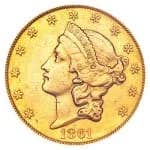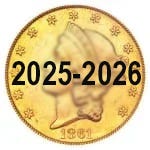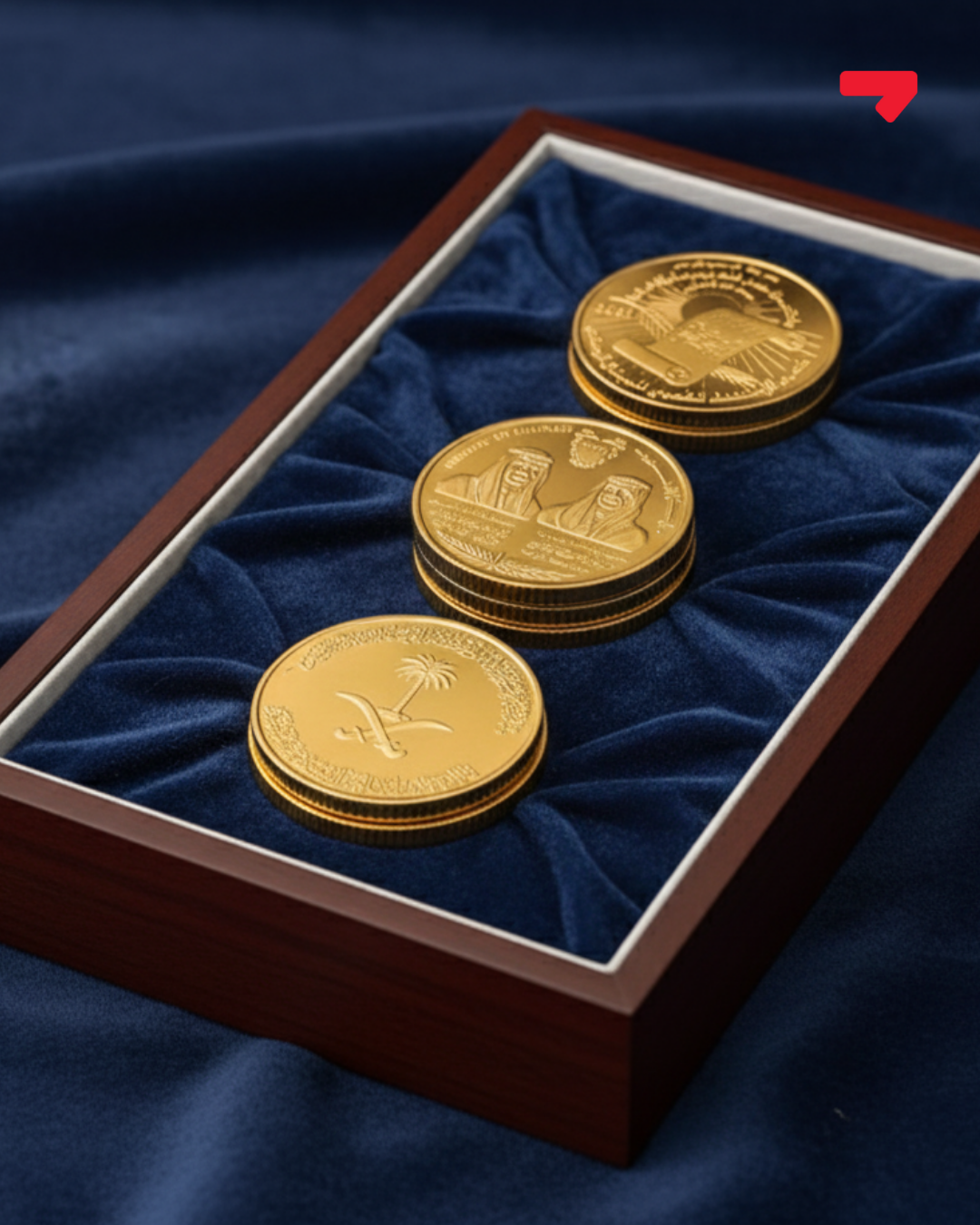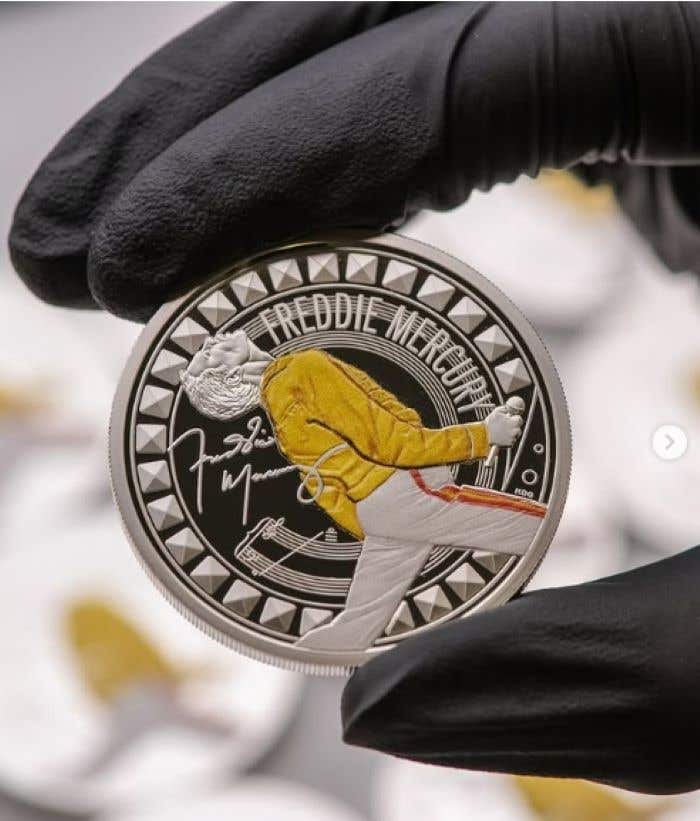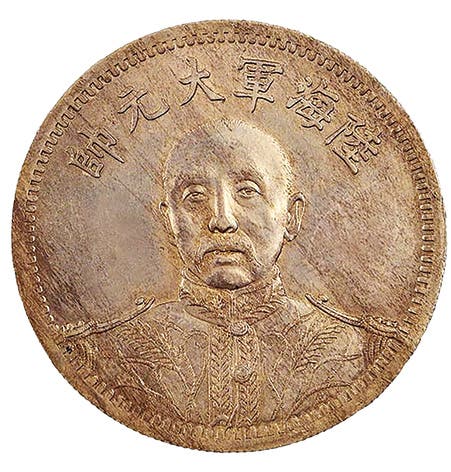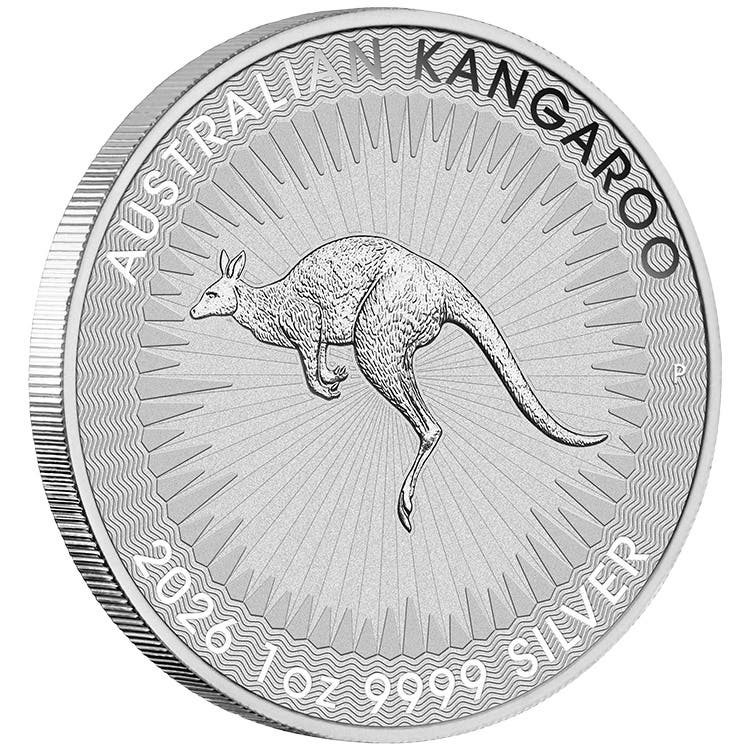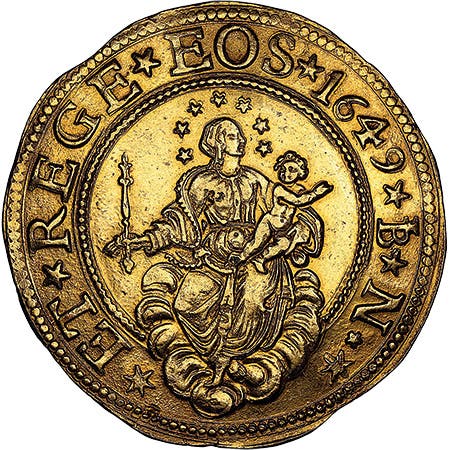Girl Power: The Female Allegories That Have Shaped National Currency Identity
From Britannia to Marianne, these timeless female figures have long embodied national pride, power, and politics on coins across the world.
For centuries, women have graced the coins of Europe and beyond, not as queens or empresses, but as personifications of nations. These allegories—figures such as Britannia, Helvetia, and Marianne—are more than mere decorations; they are enduring symbols of national identity, strength, and ideals, often reflecting the historical contexts and political shifts of their time. This article examines some of the most prominent of these female figures, their evolution on coinage, and their unique place in numismatic history.
Unless noted, all photographs are courtesy of the author.
Europa: The Continent’s Namesake
The mythological figure of Europa, a Phoenician princess after whom the continent is named, appears on European coinage and most notably on the Greek 2-euro coin. The design of Europa’s abduction by Zeus in the form of a bull is inspired by an ancient Spartan mosaic from the 3rd century A.D. This depiction powerfully symbolizes Europe’s deep cultural roots in Greek mythology and its shared heritage.
Beyond coins, Europa is also honored on Euro bank notes, with the “Europa” series featuring her portrait as a watermark and hologram. While she has appeared on some commemorative coins, Europa is generally less common on official circulating coins than national personifications.
Britannia: Guardian of the British Isles
Britannia, the female personification of Great Britain, boasts one of the longest traditions of coinage, dating back to Roman times. Under Emperor Hadrian in the 2nd century A.D., Roman coins depicted a seated Britannia with a spear and shield, which symbolized the conquered province. She made a numismatic comeback in England under King Charles II in 1672, appearing on farthings and halfpennies. These early modern depictions showed her seated on rocks, wearing a helmet, shield, and lance, often accompanied by an olive branch to symbolize national strength and maritime control.
Especially during the Victorian era, Britannia remained a constant motif, used to symbolize the British Empire’s self-image as a global naval power. After a brief absence, she returned in 1971 on the 50-pence coin and, since 2015, continues to appear on the 2-pound coin by standing with a trident and shield with the Union Jack. The trident highlights maritime dominance, and the shield represents protection and national unity.
Since 1987, “Britannia” bullion coins in gold, silver, and platinum feature annually varying artistic designs of the female allegory, though her symbolism remains constant: strength, unity, and resilience. Collectors worldwide particularly favor the modern “Britannia” investment coins due to their regularly changing designs and high minting quality.
Helvetia: Switzerland’s Mother Figure
The personification of Switzerland, Helvetia, became an important national allegory when the first Swiss coin featuring the figure was issued in 1850. Since then, she has dominated Swiss coinage: standing and holding a spear and a shield bearing the Swiss Cross, Helvetia graces the ½, 1-, and 2-franc circulating coins.
Created by Albert Walch in 1860, this design depicts her wearing a wreath and a long cloak, surrounded by 22 stars that represent the Swiss cantons. Remarkably, this design has remained unchanged since 1874, giving it high recognition value.
Symbolically, Helvetia embodies the unity of the Swiss Confederation across its four national languages, which is why “Helvetia” is still used as the country’s official designation on coins and stamps to maintain neutrality among the German, French, Italian, and Romansh languages.
Historically depicted as a “mother of the nation,” her attributes evolved in the 19th century as she was armed to emphasize the young federal state’s sovereignty and defensiveness. For collectors, the legendary gold coins featuring Helvetia are particularly popular, especially the 20-franc Goldvreneli (1897–1949), which shows a romantic depiction of a bust of Helvetia wearing braided hair, sitting against an Alpine panorama.
Marianne: France’s Enduring Symbol of Liberty
Marianne embodies the core values of the French Republic: liberty, equality, fraternity. She is usually depicted wearing a Phrygian cap, which is a symbol of freedom. Her presence on coins began immediately after the French Revolution, first appearing in 1795 on copper coins designed by French engraver Augustin Dupré. She then disappeared under Napoleon I and subsequent monarchs, only to return in the Second Republic in 1848, gracing gold coins.
Marianne’s depiction underwent significant evolution, becoming more youthful and dynamic during the Belle Époque and Art Nouveau periods. Iconic designs include Oscar Roty’s “La Semeuse” (The Sower), a striding Marianne scattering seeds, which appeared on silver coins in 1897 and was later reused. These “Sower” coins, with flowing garments and a sunrise in the background, are considered numismatic masterpieces, symbolizing progress and the hope of the young Third Republic.
In the 20th century, the image of Marianne adapted to Art Deco styles, showing a modernized profile with clean lines. Today, she remains on French euro circulation coins, reflecting both a youthful and dynamic profile, as well as a modern version of Roty’s “Sower.”
Marianne consistently represents the idea of the Republic on coins, whether as a fighter, a peaceful worker, or a heroic figure; her adaptability mirrors France’s tumultuous history. Historic Marianne coins, especially those from the pre-1920 “Semeuse” silver period, are highly sought after by collectors.
Courtesy of Numismatic Guaranty Company (NGC).
Italia: A Changing Symbol of Unity
The personification of Italia, often depicted as a young woman referred to as Italia Turrita wearing a mural crown of towers around her head, has ancient origins, but has also found its way onto modern coins. Early examples include coins from the Social War (91–88 B.C.) featuring a crowned Italia.
In the Roman Empire, she was depicted with attributes such as a cornucopia (representing wealth), a sword or scales (symbolizing justice), wheat ears (indicating fertility), and the Stella d’Italia (a five-pointed star, symbolizing Italy’s destiny). The mural crown on her head represented urban liberties and the ancient protective goddess Cybele.
After Italy’s unification in 1861, King Vittorio Emanuele III promoted artistic coin designs with allegorical motifs. A notable example is the 1914 “Quadriga Briosa” 2-lire silver coin, which depicts a female Italia on an ancient quadriga, holding a shield and an olive branch. This piece evoked a patriotic awakening in Italy before World War I. Another, the 1912 100-lire gold coin, showed an agricultural Italia with ears of corn and a hand on a plow, emphasizing the importance of agriculture.
During Italy’s Fascist era of the 1920s and 1930s, Italia was instrumentalized, often depicted holding a fasces or a bound bundle of wooden rods with an axe blade atop, which represents a ruler’s power over their citizens. After the formation of the Republic in 1946, Italia largely faded from official coins, with the Republic preferring other symbols. However, she remains present in Italian symbolism and on some modern commemorative issues. For collectors, early allegorical coins from the Kingdom, such as the 1914–1915 “Quadriga” lire or the 1912 100 lire, are highly prized.
Hispania: Spain’s Brief Allegorical Reign
Spain also has a national allegory, Hispania, whose roots date back to Roman times, where it symbolized the province on coins. A classic example is from Emperor Hadrian’s denarii, dated around A.D. 134, showing a mourning Hispania seated with an olive branch and a small rabbit, the latter symbolizing the Iberian Peninsula. These Roman depictions often showed her in a submissive pose, especially on victory coins.
In the modern era, Hispania gained significance in the 19th century as a national embodiment. After the Glorious Revolution of 1868, which overthrew Queen Isabel II, the provisional government decided to depict the Spanish nation allegorically on new coins. The famous 1870 5-pesetas silver coin shows a recumbent female figure, Hispania, with a mural crown, holding an olive branch. She leans on a bundle representing the Pyrenees, with a rock symbolizing Gibraltar at her feet, and the sea and sun’s rays in the background. This coin conveyed the aspirations of the new, monarchy-free government: peace, national unity from the Atlantic to the Pyrenees, and sovereignty.
However, the 1870 Hispania coin was unique; a monarchy was restored in 1871, and future coins reverted to heraldry or monarchical portraits. While she appeared briefly during the Second Spanish Republic (1931–1939), the state coat of arms remained dominant. For collectors, the few official issues featuring Hispania are highly appealing, with the 1870 5-peseta piece being a sought-after piece of Spanish history, marking perhaps the most precise visualization of Spanish national consciousness on currency.
Germania: Germany’s Absent Allegory
Germania, the female personification of Germany, is well-known from 19th- and early 20th-century paintings, monuments, and bank notes. However, she is conspicuously absent from official German circulation coins, a unique situation with historical and political reasons. Her history also extends to Roman times, where Germania was depicted as a defeated barbarian on coins after German uprisings. As a national allegory, Germania emerged in the early 19th century, coinciding with the desire for a unified nation-state. The famous 1848 painting of Germania, with a sword and oak wreath, in the Frankfurt St. Paul’s Church shaped her appearance: a youthful woman with flowing hair, adorned with oak leaves (representing steadfastness), often accompanied by an imperial sword or eagle.
In the German Empire, Germania became an unofficial symbol; however, the monarchy preferred the emperor’s portrait or the imperial eagle on coins, likely due to its unwillingness to feature a seemingly republican female figure. An exception was the 1871 “Siegestaler” (Victory Thaler) commemorative coin, which celebrated Prussia’s role in the founding of the empire, depicting the regional variant of Germania “Borussia” (Prussia’s personification). Germania found her place primarily on Imperial bank notes, such as the 100-mark note of 1883 or the 50-mark note of 1899, where she was manifested as a protector and symbol of imperial achievement. In the Weimar Republic, Germania remained largely absent from official coins, which focused on other symbols, such as the eagle or farmers. A female allegory for Germany was ideologically unwanted during the Nazi era and was replaced by the party’s eagle.
Today, no circulating German coin features the image of Germania. This vacuum has been filled by private enterprises, notably the Germania Mint, which issues the popular “Germania” bullion coins. Although not an official tender, these coins are highly sought after by collectors. These designs evoke the martial 19th-century style of the allegory.
The key reasons for Germania’s official absence are complex. The Kaiserreich prioritized monarchical symbols, and unlike France, Germany did not have a republican upheaval necessitating a Marianne. Moreover, Germania acquired nationalist and militaristic connotations, especially through WWI propaganda, where she was stylized as a “war mother.” After 1945, the Federal Republic deliberately avoided such symbolism to distance itself from exaggerated national myths, opting for the neutral federal eagle. Thus, Germania remains a figure of the past for state mints, leaving her to be a subject for private minting.
Collector Appeal and National Narratives
Examining these allegories, a clear pattern emerges: Britannia, Helvetia, and Marianne are firmly established icons with widespread recognition and high collector appreciation. They frequently appear on coins throughout the centuries. Britannia’s investment coins are globally recognized. Helvetia adorns modern Swiss francs, and her Goldvreneli are classics. Marianne is intrinsically linked to the French Republic.
Conversely, Italia, Hispania, and Germania have struggled to establish a continuous presence on official coins. For Italy and Spain, political developments, such as monarchical preferences or reliance on coats of arms, limited their appearances to specific periods or commemorative issues. Germania, while a powerful symbol of national unity, primarily existed outside official coinage. This makes the few existing coins with Germania motifs true rarities and historical curiosities for collectors.
Ultimately, the imagery of female allegories on coins reflects the self-perceptions of nations, embodying values such as freedom, unity, defense, or peacefulness, depending on the era. Their presence or absence on official coinage speaks volumes about political priorities. Where they appear, they serve as easily understood ambassadors of national values, whether Britannia with the Union Jack for British unity or Helvetia with a spear and shield for Switzerland’s armed neutrality. Where they are absent, other symbols have taken their place, often out of a consciousness of historical burdens. For numismatics, these allegories represent a fascinating intersection of art, history, and politics, allowing collectors to acquire not just metal pieces but a tangible piece of a nation’s identity and myth.
You may also like:

